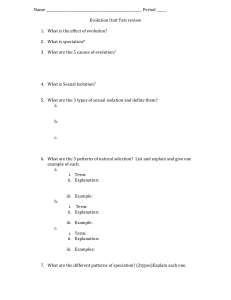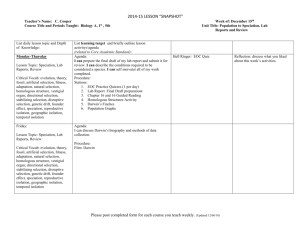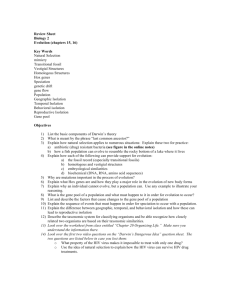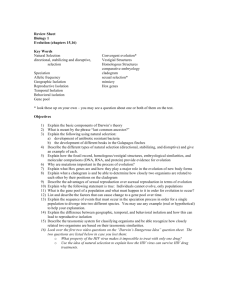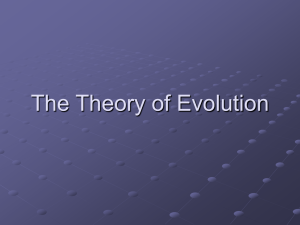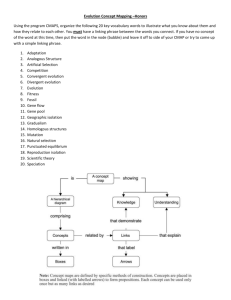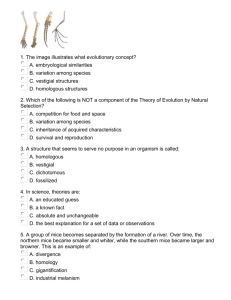Evolution Study Guide
advertisement
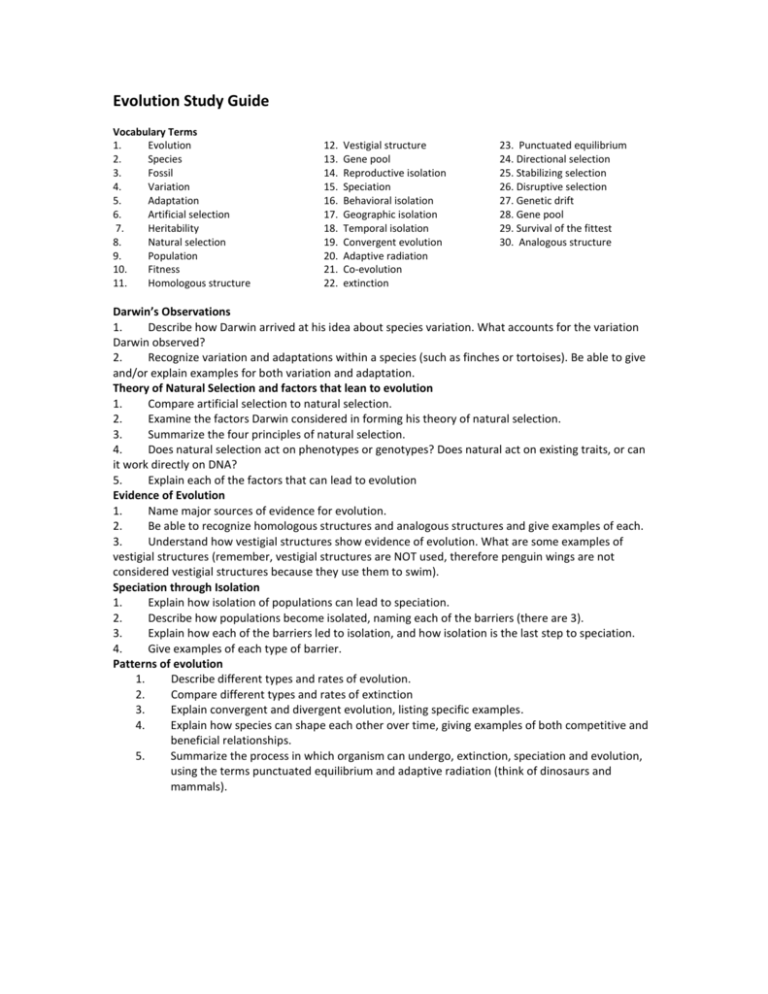
Evolution Study Guide Vocabulary Terms 1. Evolution 2. Species 3. Fossil 4. Variation 5. Adaptation 6. Artificial selection 7. Heritability 8. Natural selection 9. Population 10. Fitness 11. Homologous structure 12. 13. 14. 15. 16. 17. 18. 19. 20. 21. 22. Vestigial structure Gene pool Reproductive isolation Speciation Behavioral isolation Geographic isolation Temporal isolation Convergent evolution Adaptive radiation Co-evolution extinction 23. Punctuated equilibrium 24. Directional selection 25. Stabilizing selection 26. Disruptive selection 27. Genetic drift 28. Gene pool 29. Survival of the fittest 30. Analogous structure Darwin’s Observations 1. Describe how Darwin arrived at his idea about species variation. What accounts for the variation Darwin observed? 2. Recognize variation and adaptations within a species (such as finches or tortoises). Be able to give and/or explain examples for both variation and adaptation. Theory of Natural Selection and factors that lean to evolution 1. Compare artificial selection to natural selection. 2. Examine the factors Darwin considered in forming his theory of natural selection. 3. Summarize the four principles of natural selection. 4. Does natural selection act on phenotypes or genotypes? Does natural act on existing traits, or can it work directly on DNA? 5. Explain each of the factors that can lead to evolution Evidence of Evolution 1. Name major sources of evidence for evolution. 2. Be able to recognize homologous structures and analogous structures and give examples of each. 3. Understand how vestigial structures show evidence of evolution. What are some examples of vestigial structures (remember, vestigial structures are NOT used, therefore penguin wings are not considered vestigial structures because they use them to swim). Speciation through Isolation 1. Explain how isolation of populations can lead to speciation. 2. Describe how populations become isolated, naming each of the barriers (there are 3). 3. Explain how each of the barriers led to isolation, and how isolation is the last step to speciation. 4. Give examples of each type of barrier. Patterns of evolution 1. Describe different types and rates of evolution. 2. Compare different types and rates of extinction 3. Explain convergent and divergent evolution, listing specific examples. 4. Explain how species can shape each other over time, giving examples of both competitive and beneficial relationships. 5. Summarize the process in which organism can undergo, extinction, speciation and evolution, using the terms punctuated equilibrium and adaptive radiation (think of dinosaurs and mammals).
